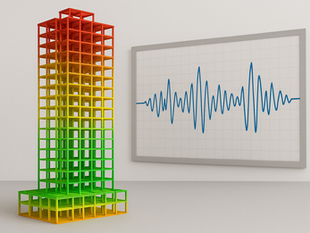
Parametric & Computational Design in Skyscrapers: The Future of Vertical Architecture
2
7
0
The Rise of Algorithm-Driven Skyscrapers
As urban populations grow, cities are expanding vertically, making skyscrapers essential for high-density living and working environments. Parametric and computational design are revolutionizing how these towers are conceptualized, engineered, and constructed. By leveraging algorithms, data-driven optimization, and advanced simulations, architects and engineers can push the boundaries of efficiency, sustainability, and aesthetics in skyscraper design.
From wind-resistant structures to energy-efficient facades, parametric design allows skyscrapers to respond dynamically to environmental and structural demands. In this article, we explore how computational tools are shaping the future of high-rise buildings and what lies ahead for vertical urbanism.

What is Parametric & Computational Design in Skyscrapers?
Optimized Structural Forms
Parametric design enables skyscrapers to be structurally optimized for wind loads, seismic activity, and material efficiency. Instead of relying on traditional, static frameworks, architects can use algorithmic modeling to create more aerodynamic, resilient, and lightweight high-rises.
Adaptive & Responsive Facades
One of the most significant advantages of computational design is the ability to create climate-responsive facades. These systems adjust to external factors such as sunlight, temperature, and wind to enhance energy efficiency and indoor comfort.
Algorithmic Urban Integration
Computational tools help architects plan vertical cities by analysing population density, infrastructure, and green space distribution. Skyscrapers are no longer standalone structures but integrated elements of intelligent, connected urban ecosystems.
The Power of Algorithm-Driven Skyscraper Design
1. Wind Resistance & Structural Efficiency
Tall buildings must withstand extreme wind loads. Computational simulations help refine tower shapes, facade patterns, and internal cores to reduce wind-induced motion, improving structural stability and occupant comfort.
2. Sustainability & Energy Optimization
Modern skyscrapers must be more than just tall—they must be sustainable. Generative design tools allow architects to optimize the use of solar energy, natural ventilation, and advanced shading systems, reducing energy consumption and environmental impact.
3. Space Efficiency & Modular Design
By using parametric algorithms, skyscraper interiors can be dynamically configured to maximize usable space, ensuring flexible layouts that adapt to future needs.
4. Smart Skyscrapers & AI Integration
Artificial intelligence and real-time data analysis will allow skyscrapers to become self-regulating environments, adjusting lighting, HVAC systems, and occupancy levels to improve energy efficiency and user experience.
Parametric Design in High-Rises
1. The Shanghai Tower, China (Gensler)
A prime example of computational optimization, this twisting skyscraper was designed using parametric modeling to reduce wind loads by 24%, significantly cutting structural material use.
2. The Al Bahar Towers, Abu Dhabi (Aedas)
These towers feature a parametric shading system that opens and closes in response to sunlight, reducing interior cooling loads by nearly 50%.
3. The Cactus Tower, Denmark (BIG)
A unique high-rise that employs computational design to optimize view corridors, daylight access, and structural stability, while maintaining an organic yet geometric aesthetic.
4. The Evolution of Skyscrapers
Parametric design is guiding the future of skyscrapers by enabling dynamic, sustainable, and highly efficient towers that adapt to urban and environmental needs.
The Future of Algorithm-Driven High-Rise Architecture
The next generation of skyscrapers will incorporate AI, robotics, and computational analysis to create more intelligent and adaptive buildings. Key trends include:
Generative Design & AI-Assisted Creativity – AI-driven algorithms will generate the most efficient skyscraper shapes and structures based on environmental data.
Climate-Responsive Towers – Skyscrapers will feature self-shading facades, kinetic wind deflectors, and automated ventilation systems.
Vertical Urbanism & Smart Cities – Computational tools will shape the integration of high-rises into mixed-use developments, ensuring sustainable urban expansion.
3D Printing & Robotic Fabrication – Future skyscrapers may be constructed with 3D-printed components, reducing material waste and optimizing efficiency.
With these advancements, parametric and computational design are not just tools, they are the future of high-rise architecture.
The Role of Computational Design in Future Skyscrapers
As cities expand vertically, parametric and computational design will be at the forefront of next-generation skyscraper development. By embracing algorithm-driven architecture, we can create stronger, more efficient, and more sustainable high-rises that seamlessly integrate into future urban environments.
Parametric architecture is not just about curved or fluid forms—it is about optimization, adaptability, and high-performance design. The next era of skyscrapers will be shaped by data, computation, and innovative problem-solving to redefine vertical living.
📌 Stay connected! Follow for insights into the latest trends in architectural innovation.






